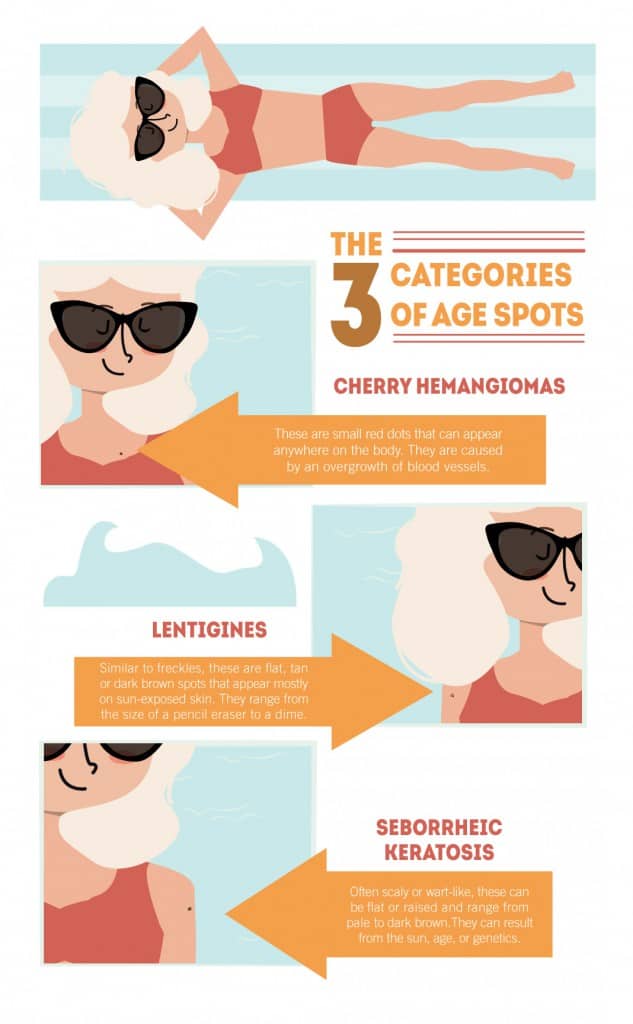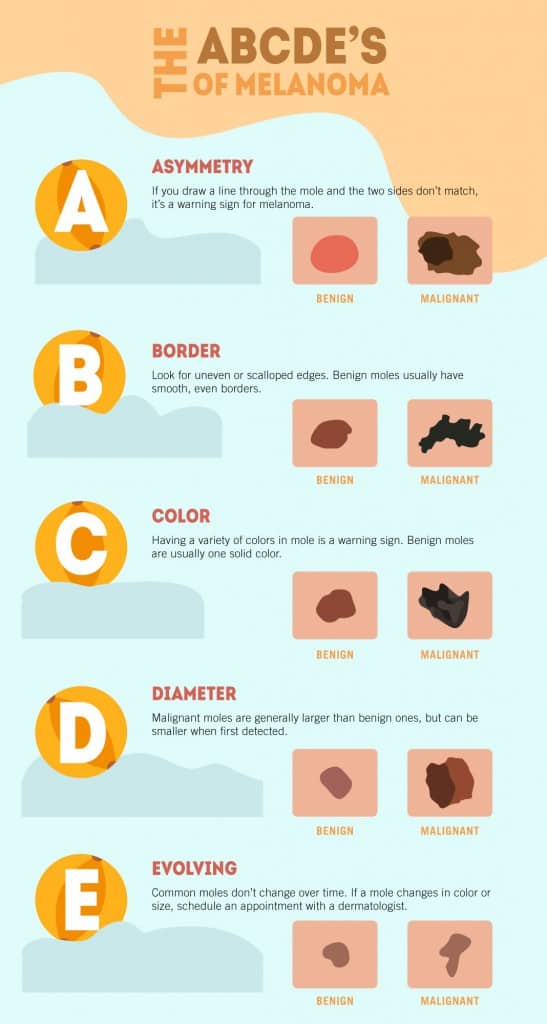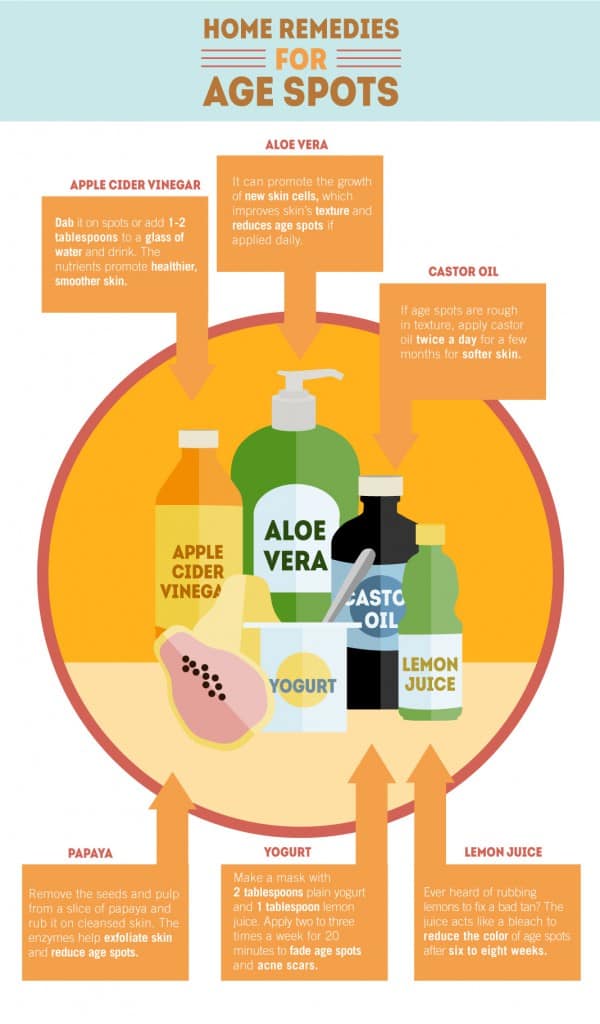 Causes, Treatment, and Prevention
Causes, Treatment, and Prevention
Skin changes as we age, including the appearance of age spots—flat, brown spots that pop up on our faces, hands, arms, and other areas frequently exposed to the sun. While they are harmless, it’s important to distinguish age spots from cancerous cells and know when to see a dermatologist. Read on for everything you need to know about age spots, including steps to prevent and reduce their appearance.
What They Are
Also called solar lentigines or liver spots (although they have nothing to do with the liver), age spots are common over the age of 50 but can appear earlier, especially with excess sun exposure. They usually look like new freckles—flat, round, and brown or black. If you notice a new spot get it checked by a dermatologist to make sure it’s just a cosmetic issue and not something more, like cancer. Dark, cancerous spots can accompany age spots, so it’s best to have all blemishes checked.
While they do accumulate over the years, age spots are not completely related to aging. The older people get, the more sun exposure they’ve had—thus, with age comes more spots. Blame the sun on any other forms of unwanted pigmentation too. Rather than freckles, you may experience uneven skin tone where larger areas of skin are lighter or darker than others. There are three different types of age spots: cherry hemangiomas, lentigines, and seborrheic keratosis.
 Causes
Causes
Sun exposure is the main cause of age spots. The skin expands with more pigment and creates large freckles, either alone or clustered together. Freckles can also be hereditary and even appear in childhood. Fair-skinned people are more at risk but it’s equally important for people with darker complexions to get checked out since skin cancer may be harder for them to spot.
Free radicals—chemicals produced from normal cellular metabolism—can damage skin cells, speeding up the aging process. Antioxidants such as vitamin E can block free radicals from damaging skin. Include foods high in vitamin E in your diet, including sunflower seeds, almonds, and tomatoes.
Lifestyle choices can speed up the production of age spots. Unsaturated fats and excess iron together can accelerate the formation of age spots. Stick with healthy fats such as olive and coconut oils, and don’t take an iron supplement unless your doctor recommends it.
Excess estrogen can cause increased age pigmentation, so avoid foods that boost estrogen levels, such as soy and grapefruit. Progesterone, the hormone that can help balance out estrogen, is naturally found in wild yam extract and can be especially helpful if you’re on any type of contraception.
Prevention
Reducing sun exposure and consistently wearing sunscreen starting at a young age helps prevent age spots from appearing later on in life. The sun’s rays are most powerful between 10 am and 3 pm, so try to save outdoor activities for other times of the day. Apply a broad-spectrum sunscreen with SPF 30 or higher 15 minutes before heading outside; it will block UVA and UVB rays. Reapply every two hours—more if you’re swimming or sweating. Wear wide-brimmed hats and invest in clothes with an ultraviolet protection factor (UPF) to block the sun’s rays. Sunscreen will also prevent current age spots from multiplying or enlarging in size.
When to See a Dermatologist
Get new spots checked out to determine if they are age spots or a more serious condition. Even if it’s not cancerous, your doctor may recommend you get a full body exam, especially if you have a history of skin cancer in your family. They will also let you know what skin issues to look out for. For your first appointment, be prepared to answer your doctor’s questions. They will want to know when the spot first appeared, if it’s irritated, what kind of sun protection you use, and if you have noticed any other skin changes.
Melanoma, the most dangerous form of skin cancer, can resemble age spots and is treatable when diagnosed early. If you notice a bump growing on a mole or a new dark spot that grows out, get it checked immediately. Your doctor can diagnose age spots with a visual inspection or by removing a skin sample for biopsy.
Melanoma is not the most common type of skin cancer, but it is the deadliest, killing an estimated 9,940 people annually in the U.S. Melanomas develop from DNA damage to skin cells, caused by frequent exposure to UV rays, either from the sun or tanning beds. Some develop from moles, so it’s extremely important to know your body and recognize any changes.
How to Reduce the Appearance of Age Spots
To reduce pigmentation in age spots, use an all-over skin brightener. Spot treating can cause a halo effect (you may notice light spots on a darker background). Look for products with Vitamin C, which can improve skin’s clarity. Retinol, typically used for anti-aging purposes, can also target hyper pigmentation. It speeds up cell turnover so age spots will form more slowly. Slough away dead skin cells with an exfoliating ingredient such as glycolic or salicylic acid to reveal brighter skin. Removing the top layer will also allow other products to penetrate deeper into the skin, which makes brightening ingredients more effective.
If over-the-counter products aren’t working for you, prescriptions and in-office treatments can lighten or remove age spots. Hydroquinone, a bleaching cream available in drugstores (up to two percent) or by prescription (four percent), fades spots over several months. In conjunction with retinol, this can be the best option to even out pigmentation, but just apply on areas you want to lighten. Hydroquinone can be irritating so consider alternatives if you have sensitive skin.
Laser treatments destroy melanin-producing cells to fade age spots after several sessions but can slightly discolor skin. Your doctor may also recommend freezing age spots with liquid nitrogen, which destroys the extra pigment to lighten skin. It works on single spots or small clusters. These treatments are considered cosmetic so insurance may not cover the cost.
Give each treatment time to work. Brightening products and at-home remedies will take several months to fade spots. Age spots can recur even after you’ve lightened them if they’re exposed to UV rays. Sun exposure can trigger the production of pigment again, so SPF is a must (even for people with dark skin). Always wear a broad-spectrum sunscreen with SPF 30 or higher and schedule regular checkups with your dermatologist.





